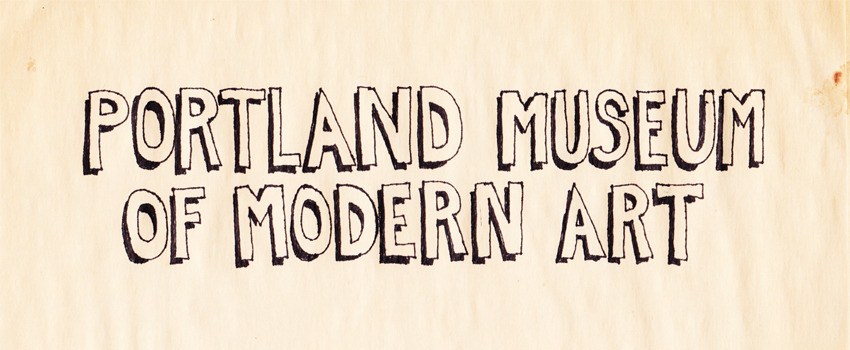By Libby Werbel
Is it possible to grow your own museum? What would it look like? How would it be different from the museums you have come to know? In 2012, along with a coalition of artists, performers, and world builders, I set out to make my own deconstructed version of what a museum could be,outside of the mess they had become. In the basement of a record store that used to be an automechanic shop, I set out to build the Portland Museum of Modern Art.
By claiming that our small basement space was a “MoMA,” we were able to share the power of that name with anyone who joined in on the project. Portland is small enough that people outside of it wouldn’t know that we didn’t have a Museum of Modern Art. Through this intentional satire, both the artist and the audience were bonded in the long con. And because of the name,I would benefit from quicker responses to email requests, artist inquiries, and research projects,while the artists we exhibited would benefit by receiving faster access to their next opportunity—one that might require formal, institutional validation. All of this subverted the very notion of a museum and spoke directly to my general inquiries around authority in the arts.
This essay was edited by Stephanie Snyder, John and Anne Hauberg Curator and Director, Douglas F. Cooley Memorial Art Gallery, Reed College, and appeared in FIGURING, a publication of The Ford Family Foundation. The annual arts journal (shifting title as it progresses) is part of the program element CRITICAL CONVERSATIONS, led by the University of Oregon with partners Portland State University, The Cooley Gallery, Reed College; and PNCA at Willamette University.
The inaugural publication is dedicated to notions of “figuring,” that is, the processing of a moment to inform a position from which to act, the presentation of a form, or expression of a body. By holding space for both indeterminacy and latent form, Figuring conjures histories and possible futures, lived experiences, and propositions for ways that ethereal matter might exist concretely or be allowed to endure as defined by its own logic.
